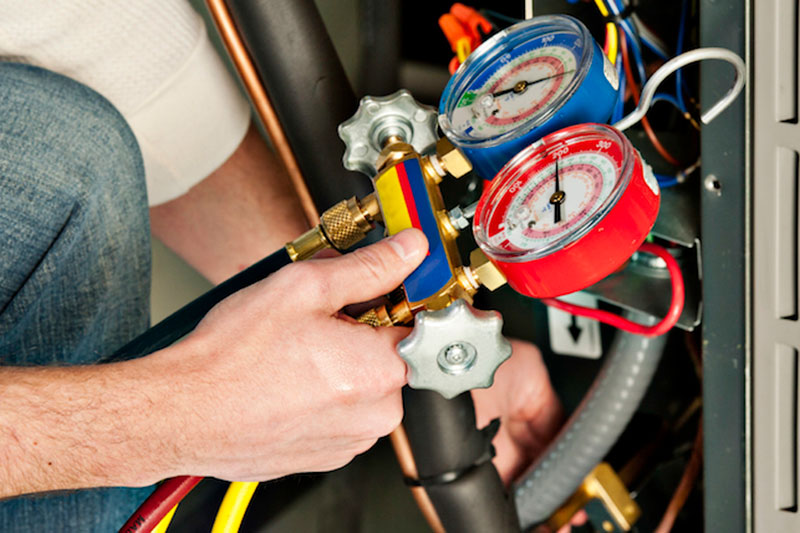
You might not think much about how your air conditioner works, but it needs refrigerant to keep your house fresh. This refrigerant is bound by environmental regulation, since it contains chemicals.
Subject to when your air conditioner was installed, it may require R-22, R-410A or R-32 refrigerant. We’ll go over the differences and which air conditioner refrigerants are being phased out in Dundas and Northfield, in addition to how these phaseouts affect you.
What’s R-22 and Why Is It Phased Out?
If your air conditioner was put in before 2010, it possibly uses Freon®. You can learn if your air conditioner contains it by calling us at 507-663-1208. You can also look at the name plate on your air conditioner condenser, which is found outside your home. This sticker will have info on what model of refrigerant your AC has.
Freon, which is also known as R-22, contains chlorine. Scientists consider Freon to be bad for the earth’s ozone layer and one that prompts global warming. The Environmental Protection Agency, which governs refrigerants in the United States, outlawed its production and import in January 2020.
I Use an Air Conditioner with R-22. Do I Need to Get a New One?
It varies. If your air conditioning is operating fine, you can continue to run it. With regular air conditioner maintenance, you can expect your AC to work around 15–20 years. However, the Department of Energy notes that replacing a 10-year-old air conditioner could save you 20–40% on summertime cooling costs!
If you don’t install a new air conditioner, it can lead to difficulties if you need air conditioning repair later on, specifically for refrigerant. Repairs could be pricier, as only small amounts of recycled and reclaimed R-22 is on hand.
With the discontinuation of R-22, most new air conditioners now have Puron®. Also known as R-410A, this refrigerant was made to keep the ozone layer strong. Since it needs an incompatible pressure level, it doesn’t work with air conditioners that need R-22 for cooling.
However, Puron still has the possibility to contribute to global warming. Because of that, it may also ultimately be discontinued. Although it hasn’t been disclosed yet for residential air conditioners, it’s expected sometime this decade.
What Refrigerant Will Replace R-410A?
In preparation of the end, some manufacturers have started using R-32 in new air conditioners. This refrigerant is classified low for global warming potential—about one-third less than R-410A. And it also decreases energy expenditure by around 10%, according to the Intergovernmental Panel on Climate Change’s Fourth Assessment Report. That’s savings that may be sent on to you through your utility expenses.
Better Air Can Provide Support with All Your Air Conditioning Needs
In short, the modifications to air conditioner refrigerant probably won’t impact you very much until you need repairs. But as we went over earlier, refrigerant repairs may be more expensive due to the restricted quantities on hand.
Not to mention, your air conditioner often stops working at the worst time, often on the warmest day when we’re receiving lots of other appointments for AC repair.
If your air conditioner relies on a discontinued refrigerant or is getting old, we recommend getting a new, energy-efficient air conditioner. This delivers a hassle-free summer and may even lower your cooling expenses, especially if you choose an ENERGY STAR®-rated air conditioner. Plus, Better Air provides many financing programs to make your new air conditioner fit your budget. Contact us at 507-663-1208 to start today with a free estimate.
